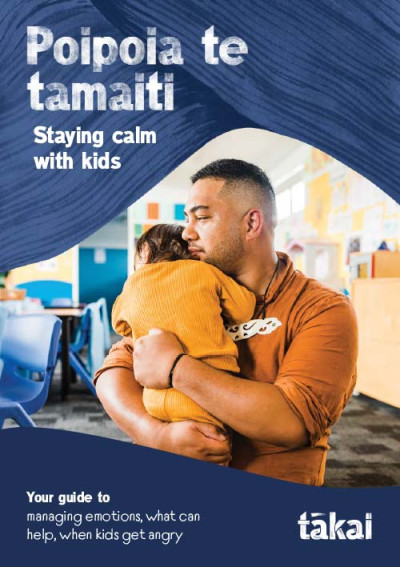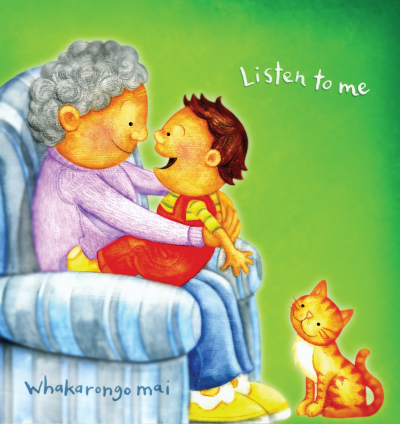
The staying calm with kids booklet
The staying calm with kids booklet has ideas to help parents keep calm when parenting their child gets hard.
On this page
What's in it
Sit alongside the parent and look at the booklet together. It talks about many aspects of parenting such as:
- anger
- regaining calm
- what to do if they do lose their temper
- analysing the situation
- external stresses
- where to get help.
The main messages are:
- we’re all in danger of losing our tempers at one time or another
- there’s no point in beating ourselves up about our feelings
- we can try to do something about it so that we don’t lose control.
Identifying stresses
Engage whānau in a conversation that’s non-judgemental, but gives them an opportunity to explore their situation, and what it is that causes them stress.
As children become more assertive and are flexing their new found abilities, it may test a parent’s patience.
Ask whānau:
- What do you think it’s like to be your child?
- Can you think of ways to make life easier for you and your child?
There is also a ‘3 ways to keep cool’ fridge magnet.
Offer the booklet or fridge magnet, whichever is most suitable, to them. They’re helpful reminders for whānau to think about and refer to when they feel they need to monitor their own behaviour.
- How do you manage your stress?
- When you’re feeling angry, do you do any of the things on the list to calm yourself?
- Would you consider trying any of them?
Being a good role model
The best way for children to learn to behave well is having positive role models to follow, like their whānau.
- Is there anything you’d like to change about your behaviour?
- How might you?
- Who supports you when things go downhill?
- Do you need help finding someone who could help you?
Triggers
The booklet The World of Under-fives also addresses many of the behaviours that can be triggers. On page 20 it says, ‘When life gets stressful, it can be hard to keep your cool with your kids.’
When parents feel angry or stressed they might react to annoying behaviours without thinking. On this page there are helpful strategies for parents to manage their own stress.
- How are you responding to your child’s unwanted or annoying behaviours?
- How could you change the way you think and act in response to the behaviour?
- How was this type of behaviour dealt with in your childhood?
- What might be influencing your child’s behaviour?
- Could it be illness, tiredness, fear, hunger or changes in circumstances?
On page 16 it introduces the concept of temperament — a natural style of behaviours we’re born with and remain fairly constant throughout our lives.
Talk about the different temperament styles with the parents. See if they can identify the temperament of their child, themselves, and other members of the family.
- How could identifying and responding to the different temperament styles help in your family relationships?













